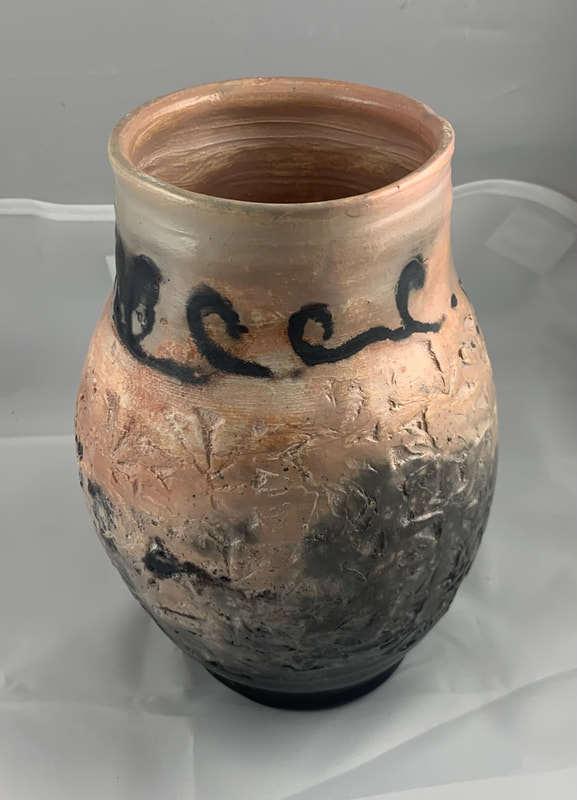|
The above named Fig-Leaf Bowls are named such, because I carved fig leaves which I got from a fig leaf tree that I planted in the garden, several years ago. It is quite unusual for fig trees to survive the winters in this region, because I think they are basically tropical plants. A friend, however, planted the trees in her garden and they grew to be large trees, producting bountiful crops of figs annually. She gave me a plant several years ago, I would carefully nurse it to life each spring, and so it has survived. A year ago, it actually produced a couple figs, which I ate and then carved one in the bottom of one of the bowls.
The bowls were wheel thrown using brown clay. When leather hard, I carved the leaves on the inside and on some ,on the outside of the bowls and bisqued. They were then glazed with Celadon in an electric kiln at Cone 6.
0 Comments
One of my very kind customers requested that I make her a garlic pot. Needless to say, I had never made one before and had never seen a garlic pot. She showed me a picture and I decided to make a garlic pot. Alas! I could not find the picture when I was ready to make the pot, but I remembered the basic shape and design. So the above picture is what eventually was produced. I was pleasantly surprised at the effect of Floating Blue and Harspur, the glazes I used. She was also very pleased which made me happy. I hope you viewers agree.
This was Sagar Firing with soluble salts in an electric kiln. The vases were wheel-thrown using white #66 clay. They were bisqued overnight, then soluble salts, such as copper, iron, cobalt, and nickel sulphates, as well as potassium dichromate rubbed on the pots, copper wire were wrapped around the pot to form a pleasing design. The pots were then added to a metal container after adding sand, seaweed, fertilizer, and other organic materials. The pots were then fired in an electric kiln at 1560 degrees Fahrenheit for 7 hours. The exciting results are what you see presented below.
|










 RSS Feed
RSS Feed